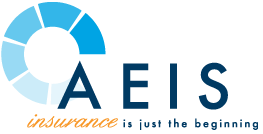Choosing Insurance Plans Based on Employee Demographics
Why Employee Demographics Should Guide Your Insurance Strategy
When selecting insurance plans for your team, it's important to ask: are you meeting the needs of your actual employees, or are you offering a generic plan hoping it fits everyone? Insurance isn't one-size-fits-all. A workforce made up of young tech professionals will likely have very different needs than one composed of experienced tradespeople or a hybrid team across multiple states. Tailoring your benefits strategy based on employee demographics is more than smart—it's strategic. It allows you to allocate your budget effectively, improve employee satisfaction, and ensure you're offering value where it counts most.
What is Employee Demographic Data and Why it Matters
Employee demographic data includes details such as age, family status, income level, location, and general health trends. This information provides insight into what types of insurance plans will resonate most with your workforce. Think of it as building a profile to better understand how to serve your employees' needs. If you’ve ever wondered "how do different insurance options impact different types of employees," this data holds the answer.
How Demographics Impact Insurance Plan Selection
Different segments of your workforce prioritize different insurance benefits. For example, a 24-year-old recent graduate may want an affordable plan with telemedicine access and mental health support, while a 48-year-old parent may be focused on robust family coverage and a broad specialist network. By considering these differences, you can ensure your plan design truly supports your team’s wellbeing.
The Benefits of Demographic-Driven Benefits Planning
- Better Engagement: Employees are more likely to value and use their benefits when they reflect actual needs.
- Retention and Recruitment: Competitive, relevant benefits are a magnet for top talent.
- Budget Optimization: Avoid wasting money on underused benefits.
Understanding Employee Census Data for a Benefits Bid
Census data is essential for securing accurate bids from providers. Whether you're considering a level-funded plan, joining a PEO, or managing a large group policy, detailed census data can make or break your benefits strategy.
What Information Is Included in Full Employee Census Data?
A complete employee census typically includes:
- Date of birth or age
- Gender
- Residential zip code
- Employment type or classification (if applicable)
- Dependent information
- Sometimes salary or job title
How Census Data Impacts Insurance Bids and Plan Design
Insurance providers use census data to determine pricing and coverage availability. For instance, a census showing a large number of employees over 55 may trigger different underwriting assumptions than one showing a primarily under-30 workforce. These assumptions directly affect the types of plans you're offered and their cost.
What Small Businesses Need for Group Insurance Pricing
In California, small group pricing is based on two key pieces of information: the zip code of the business and the ages of the enrolled employees and dependents. That's it. However, if you're considering a PEO, level-funded, or large group arrangement, a complete census is required. Even small employers can benefit from understanding this process if they're planning to grow or shift strategies.
5 Key Demographic Factors That Influence Insurance Choices
Age: How Younger vs. Older Employees View Health Insurance
Younger employees often seek flexibility and affordability. High-deductible health plans (HDHPs) paired with HSAs are attractive for their lower premiums and tax advantages. Older employees, on the other hand, may place a premium on access to specialists, low out-of-pocket costs, and predictable expenses due to existing health conditions.
Family Status: Single Employees vs. Employees with Dependents
Employees without dependents may prefer low-cost individual coverage, while those with children or spouses are more likely to need PPO plans with wider networks and robust family benefits. Offering a choice of tiers ensures each employee can find the right fit.
Income Levels: Balancing Cost and Coverage
Cost-sharing can be a barrier for employees with lower incomes. These individuals may forgo essential coverage if premiums or deductibles are too high. Consider offering a base plan with 100% employer-paid premiums and optional buy-ups for those who want additional benefits.
Health History and Risk Profiles: Tailoring Coverage Options
Although health status isn’t used in small group rating in California, knowing your team has a high prevalence of certain conditions can help you prioritize coverage areas and invest in wellness programs. For example, if back pain or diabetes is common, a plan with physical therapy or chronic disease management may provide meaningful value.
Employment Location: Local, Remote, and Out-of-State Workers
Where your employees live impacts which networks they can access. A team in one city can often share a regional HMO, but remote or multistate teams need PPOs or national networks. Employers with remote staff may also want to explore virtual-first plans, telehealth integration, or PEOs to maintain consistency across locations.
Matching Insurance Options to Different Employee Demographics
Scenario 1: Tech Startup with a Young Workforce - This San Francisco-based company employs mostly younger professionals. They offer an HDHP with HSA, mental health support, and a telemedicine-first approach. Premiums stay low, and the team appreciates digital access to care.
Scenario 2: Construction Firm with Mixed-Age Employees - With field workers and office staff, this firm offers a dual-tier plan: an HMO base and a PPO buy-up. This meets the cost needs of younger employees while accommodating older workers who require broader access.
Scenario 3: Multistate Law Firm - The firm employs remote legal professionals across six states. They use a national PPO to ensure access across regions and are exploring a PEO to streamline administration and compliance.
Scenario 4: Non-Profit with Modest Budgets - This organization offers an employer-paid HMO for core coverage and voluntary dental/vision. Defined contributions give employees flexibility to enhance their benefits based on personal needs.
How AEIS, Inc. Helps You Optimize Benefits Based on Demographics
At AEIS, we help businesses move beyond guesswork. By leveraging census data and demographic insight, we guide you through creating a strategic benefits package that makes sense for your team. Our consultative approach ensures that each plan aligns with your goals and your workforce's needs.
What we offer:
- Expert interpretation of employee demographic data
- Strategic plan design tailored to your workforce
- Support for multistate and remote employee coverage
- Access to competitive pricing through robust market analysis
Need help interpreting your census data or evaluating your current benefits approach?
Contact AEIS today to get started with a personalized consultation.
Disclaimer: Any information related to compliance, laws and regulations, or other subject matters in this blog is intended to be informational and does not constitute legal advice regarding any specific situation. The content of this blog is based on the most up-to-date information that was available on the date it was published and could be subject to change. Should you require further assistance or legal advice, please consult a licensed attorney.



